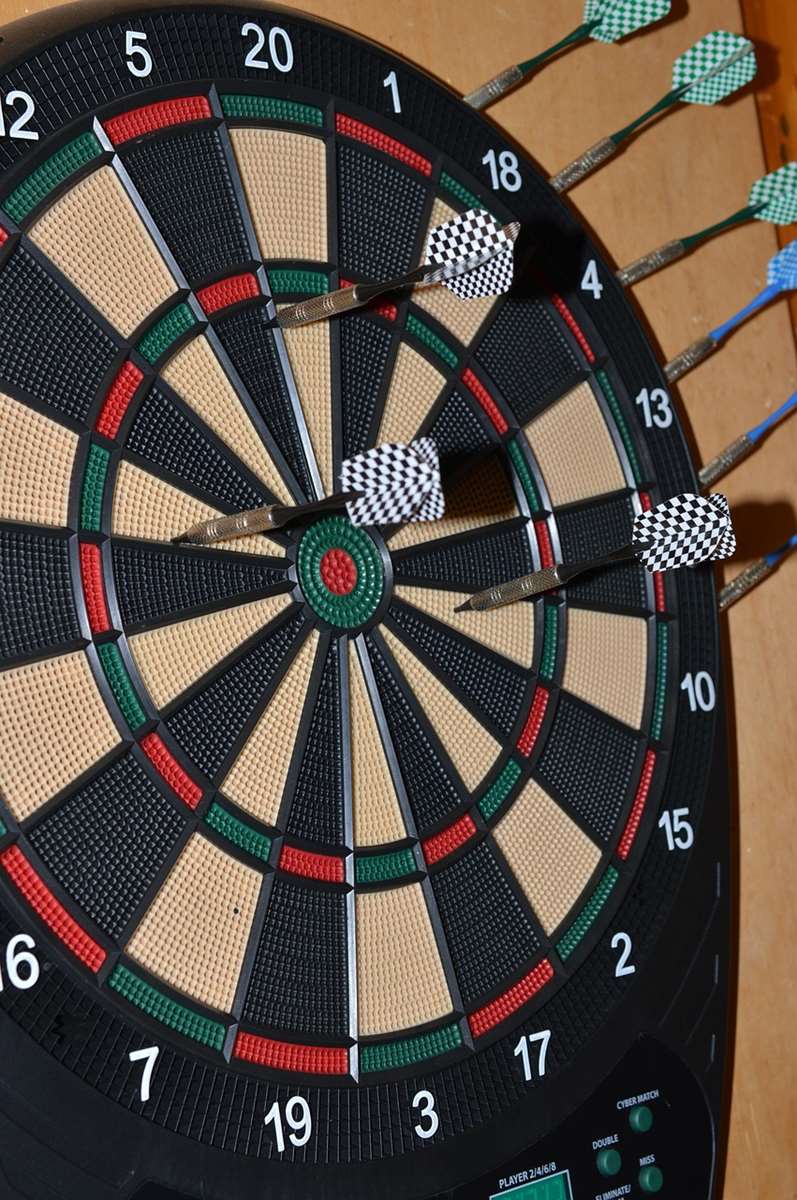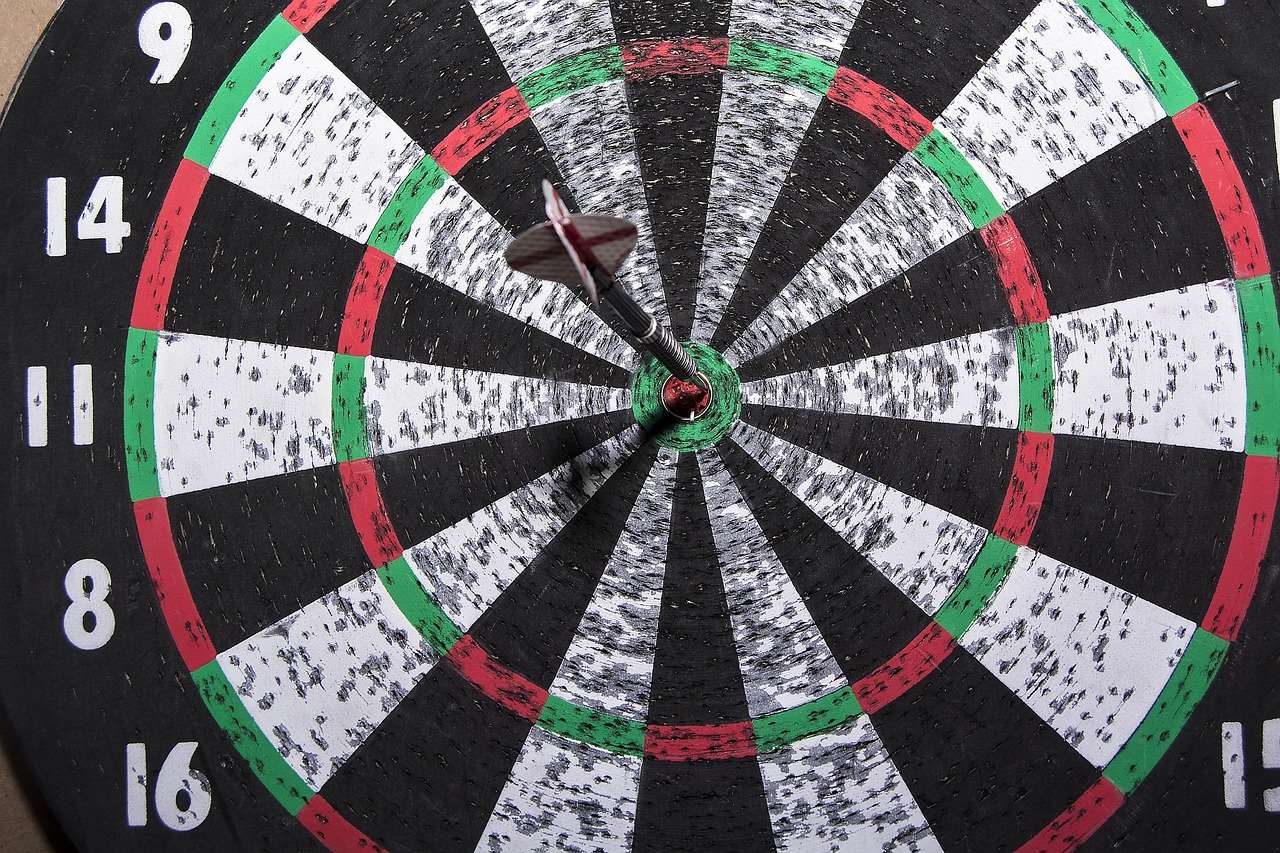Choosing a **slim flight** for your darts can significantly impact your game, but understanding the **slim flight pros cons** is crucial before making the switch. This article delves into the advantages and disadvantages of using slim dart flights, helping you decide if they’re the right choice for your playing style and skill level. We’ll cover everything from aerodynamics and stability to durability and overall performance so you can make an informed decision.
⚠️ Still Using Pen & Paper (or a Chalkboard)?! ⚠️
Step into the future! The Dart Counter App handles all the scoring, suggests checkouts, and tracks your stats automatically. It's easier than you think!
Try the Smart Dart Counter App FREE!Ready for an upgrade? Click above!
Understanding Slim Dart Flights
Slim dart flights, as the name suggests, are narrower than standard dart flights. This reduced surface area alters the dart’s aerodynamic properties, often leading to a faster, more direct trajectory. However, this characteristic also introduces different challenges and benefits compared to using standard or larger flight shapes. The size and shape of a dart flight significantly influences its **stability** in the air and its overall responsiveness to your throwing technique.
Many players switch to slim flights seeking improved grouping and reduced deflection. This is because the slimmer profile offers less resistance, making it easier for darts to cluster together tightly on the dartboard. Understanding the **nuances of slim flights** is key to optimizing your dart setup.

Slim Flight Pros Cons: A Detailed Look
Let’s break down the specific advantages and disadvantages of using slim dart flights. Weighing these **pros and cons** carefully will help you determine if they’re a good fit for your game.
Pros of Slim Dart Flights
- Increased Speed and Penetration: The reduced drag of slim flights allows the dart to travel faster and penetrate the board more effectively. This can be particularly beneficial for players who struggle with a softer throw.
- Tighter Grouping: As mentioned earlier, slim flights offer less resistance, leading to tighter groupings. This can improve your scoring consistency and reduce the likelihood of deflections.
- Reduced Deflection: With less surface area, slim flights are less prone to catching on other darts already in the board. This minimizes deflections and helps maintain accurate shot placement.
- Suitable for Rear-Weighted Darts: Slim flights complement rear-weighted darts well, as they help to stabilize the dart’s flight and prevent excessive wobbling.
Cons of Slim Dart Flights
- Reduced Stability for Some Throwing Styles: While slim flights can be advantageous, they can also be less forgiving for players with inconsistent or wobbly throws. The reduced surface area may not provide enough stability to correct these imperfections.
- Increased Sensitivity to Grip and Release: Slim flights require a more precise grip and release, as even slight variations can significantly impact the dart’s trajectory.
- May Require Adjustment to Throwing Technique: Switching to slim flights often necessitates adjustments to your throwing technique to optimize performance. This can involve altering your grip, stance, or release point.
- Durability Concerns: Some slim flights, particularly those made from thinner materials, may be more prone to damage or wear and tear compared to standard flights. Consider different material types for increased longevity.
Aerodynamic Advantages and Disadvantages
The **aerodynamic properties** of slim flights are perhaps their most defining characteristic. The reduced surface area results in less drag, which translates to a faster and flatter trajectory. This can be a significant advantage for players who prefer a more direct and aggressive throwing style. Understanding the impact of dart flights is crucial to mastering the game. For more information on dart equipment, you can Choose Best Dart Equipment.
However, this reduced drag also means that slim flights are less forgiving of errors. Any inconsistencies in your throw will be amplified, leading to greater deviations in the dart’s flight path. Players who rely on a more loopy or arcing trajectory may find that slim flights make it more difficult to control the dart’s descent.

Flight Stability and Control with Slim Flights
**Flight stability** is a critical factor in dart performance. While standard flights provide ample stability, slim flights require a more refined technique to maintain consistent control. This is because the smaller surface area offers less resistance to external forces, such as air currents or slight imperfections in your throw. If you’re using slim flights, **investing in premium dart equipment** may be a smart idea, allowing you to focus on control without equipment limitations.
Players who have a smooth and controlled release will generally benefit most from slim flights. The reduced drag allows the dart to fly straighter and more consistently, resulting in tighter groupings and improved accuracy. However, if you struggle with a wobbly or inconsistent throw, you may find that slim flights exacerbate these issues.
Material and Durability Considerations
The **material** from which your slim flights are made also plays a crucial role in their durability and performance. Thinner materials, while offering even less drag, are often more susceptible to damage. Thicker materials provide greater durability but may sacrifice some of the aerodynamic advantages. Selecting the right **dart material** will help improve your performance.
Polymer flights are a popular choice for their balance of durability and performance. They are relatively resistant to tears and wear, making them a good option for players who are prone to frequent collisions with the board. Nylon flights offer even greater durability but may be slightly heavier, which can affect the dart’s trajectory.

Adapting Your Throwing Technique
Switching to slim flights often requires adjustments to your **throwing technique**. You may need to refine your grip, stance, or release point to optimize performance. Experimenting with different techniques will help you find what works best for your individual style.
One common adjustment is to shorten your follow-through. With slim flights, the dart travels faster and straighter, so you may not need as much follow-through to guide its trajectory. Another adjustment is to focus on a smoother and more controlled release. This will help to minimize inconsistencies and improve accuracy.
Comparing Slim Flights to Standard Flights
The most obvious difference between **slim flights** and **standard flights** is their size and shape. Standard flights have a larger surface area, which provides greater stability and control. Slim flights, on the other hand, have a smaller surface area, which results in less drag and a faster trajectory. Understanding the **difference budget premium darts** flights can make is important for making the right choice.
Standard flights are generally more forgiving of errors, making them a good choice for beginners or players who struggle with inconsistent throws. Slim flights require a more refined technique but can offer greater accuracy and tighter groupings for experienced players. Ultimately, the best type of flight depends on your individual style and preferences.

Who Should Use Slim Dart Flights?
**Slim dart flights** are generally best suited for experienced players who have a smooth and controlled throwing technique. If you consistently release the dart with a clean, straight throw and struggle with darts wobbling through the air, slim flights can help you achieve greater accuracy and tighter groupings. They are particularly beneficial for players who prefer a more direct and aggressive throwing style. Think about the Quality Comparison Budget Premium Darts to see if it helps you determine the right kind of flights.
Beginners may find slim flights more challenging to control due to their reduced stability. However, with practice and dedication, even beginners can learn to master slim flights. The key is to focus on refining your throwing technique and developing a consistent release.
Experimentation and Personal Preference
Ultimately, the best way to determine if **slim flights** are right for you is to experiment and see what works best for your individual style. Try out different shapes, sizes, and materials to find the combination that provides the optimal balance of stability, control, and accuracy. Don’t be afraid to deviate from the norm and explore unconventional options. Finding your perfect dart setup is a process of trial and error.
Remember that **personal preference** plays a significant role in dart selection. What works well for one player may not work well for another. Listen to your instincts and trust your judgment. The most important thing is to find a setup that feels comfortable and allows you to play your best game.

Conclusion: Making an Informed Decision About Slim Flights
Deciding whether to use **slim dart flights** requires careful consideration of the **slim flight pros cons**. While they can offer increased speed, tighter groupings, and reduced deflection, they also demand a more precise throwing technique and may not be suitable for all players. Understanding the **aerodynamic** implications, considering material durability, and being willing to adapt your throw are all crucial steps in making an informed decision. Before purchasing a new set of darts, make sure to check out the Are Premium Darts Worth It guide.
By weighing the advantages and disadvantages based on your individual playing style and skill level, you can determine if slim flights are the right choice for you. Ultimately, the key is to experiment and find what works best for your game. Now that you’re armed with this knowledge, are you ready to take your dart game to the next level? Explore different flight options and discover the setup that maximizes your potential!
Hi, I’m Dieter, and I created Dartcounter (Dartcounterapp.com). My motivation wasn’t being a darts expert – quite the opposite! When I first started playing, I loved the game but found keeping accurate scores and tracking stats difficult and distracting.
I figured I couldn’t be the only one struggling with this. So, I decided to build a solution: an easy-to-use application that everyone, no matter their experience level, could use to manage scoring effortlessly.
My goal for Dartcounter was simple: let the app handle the numbers – the scoring, the averages, the stats, even checkout suggestions – so players could focus purely on their throw and enjoying the game. It began as a way to solve my own beginner’s problem, and I’m thrilled it has grown into a helpful tool for the wider darts community.